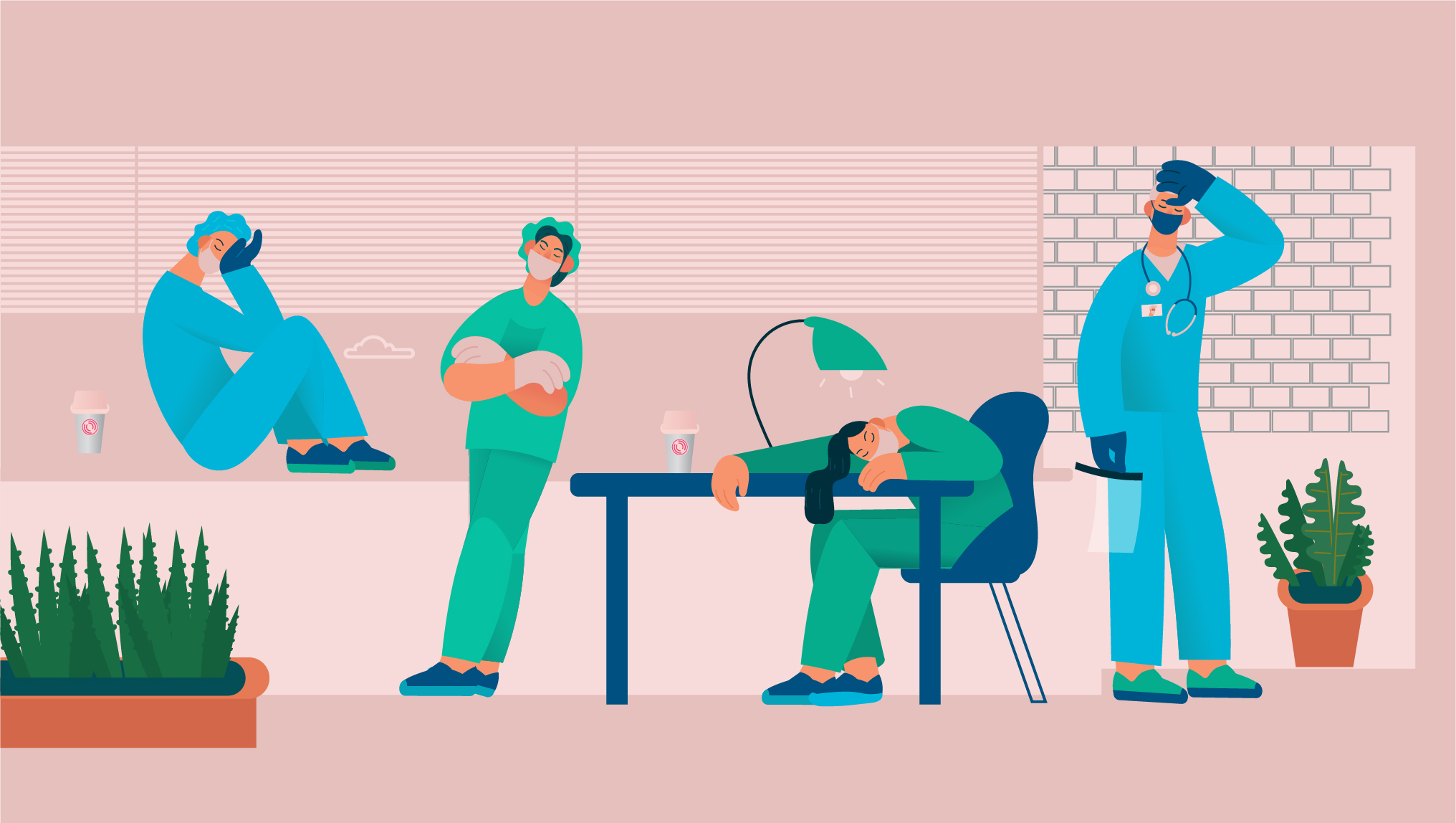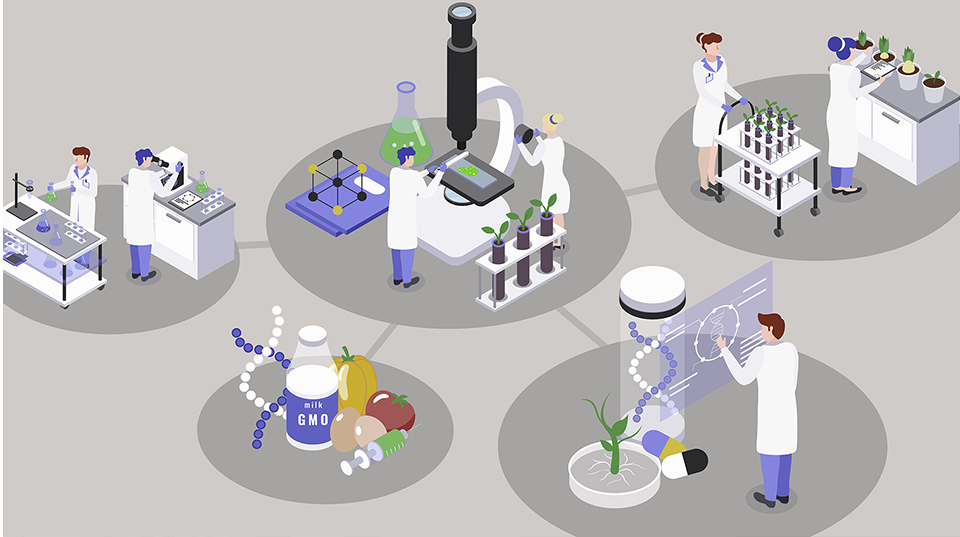Career resources content posted on NEJM CareerCenter is produced by freelance health care writers as an advertising service of NEJM Group, a division of the Massachusetts Medical Society and should not be construed as coming from, or representing the views of, the New England Journal of Medicine, NEJM Group, or the Massachusetts Medical Society
With the problem now at epidemic levels, the medicine and graduate medical education communities are undertaking major mitigation initiatives
By Bonnie Darves, a Seattle-area health care journalist.
Physician researchers and scientists who study physician burnout and the attendant decline in professional satisfaction have pointed to a worsening problem for more than a decade. Until recently, however, efforts to address the issue have been mostly sporadic and largely unorganized. When studies in the past few years started calling a spade a spade — identifying physician burnout as a serious condition that’s reached epidemic levels and now affects more than 40 percent of US physicians — organized medicine and the graduate medical education community began addressing the problem.
The American Medical Association, the Accreditation Council for Graduate Medical Education (ACGME), and the National Academy of Medicine, among other organizations, have launched programs targeting physician burnout. These endeavors initially focused on increasing awareness of what formal research and surveys clearly show: Burnout is increasing among physicians regardless of where they are on their career horizon. The epidemic is affecting residents and fellows; it’s depleting satisfaction among mid-career physicians; and it’s a chief reason cited by physicians who choose to retire early or leave medicine altogether.
The increasing awareness of physician burnout has spawned several recent efforts to mitigate the problem. Many early initiatives set their sights too narrowly, some experts claim, by failing to recognize that the chief causes of physician burnout today are not individual factors and inadequate coping mechanisms, but rather system and organizational issues. Tait Shanafelt, MD, a leading researcher on physician satisfaction and burnout who directs the Mayo Clinic Program on Physician Well-Being, thinks the focus needs to shift.
“Awareness of physician burnout and its potential impact on quality of care has increased dramatically, and most organizations now recognize this problem,” Dr. Shanafelt said. “Unfortunately, to date, most organizational efforts to address the issue have focused on individual-level solutions, such as resilience training, rather than addressing the system issues that are the primary drivers of this problem.” Those issues, while wide ranging, fall into several basic categories, based on Mayo Clinic’s research. Dr. Shanafelt cites the following: work-load, efficiency, flexibility and control, work-life integration, and organizational culture and values. Other key dimensions are finding meaning in work, and social support and community at work.
“System interventions targeting these domains need to be developed and evaluated with robust outcome measures, as well as assessment of cost and return on investment,” Dr. Shanafelt said, “so that effective approaches can be scaled and disseminated.”
Burnout-mitigation initiatives taking hold
The ACGME and the AMA are among the organizations heeding that call, with initiatives that target the burnout factors Dr. Shanafelt cites. The ACGME added a new section on physician well-being to its Common Program Requirements (Section VI) that gives residents more flexibility in their schedules and more control in managing their time. Effective July 1, 2017, residents may choose to stay beyond their shift to remain with a patient whose care is at a critical juncture, in their view; or to continue in an educational opportunity that’s important to the resident — observing or participating in a procedure, for example “One thing we have heard from residents in recent years is that they feel there is a genuine loss of choice,” said Rowen Zetterman, MD, co-chair of the ACGME Common Program Requirements task force. “And we know that one factor that contributes to burnout is being in a situation in which you have no choice.”
Residents have cited circumstances in which they’ve had to leave the bedside of a critically ill or dying patient because they’ve reached the end of a 16-hour shift, Dr. Zetterman noted, or have been forced to leave the hospital before their patient comes out of recovery after surgery. The new requirements attempt to address such dilemmas. Those “overtime” hours still count in the 80-hour work week, but the greater individual flexibility might help alleviate an often-cited stressor: lack of schedule control.
Anai Kothari, MD, a surgery resident who serves on the Common Program Requirements task force, expects that these changes will be well received. “This requirement is a huge change. It dramatically increases the amount of flexibility residents have to conduct their time in the hospital, because there’s this sense that you’re constantly competing against the clock in terms of how the [duty-hour] standards were written,” said Dr. Kothari, who is training at Loyola University Medical Center in Chicago. “One major piece of this is that there’s now a standard for resident well-being in the requirements. That’s a huge transformation from when I started my training five years ago.”
In addition, the Section VI requirements include a new policy that permits residents to take time off for personal health care needs, whether that is a dental appointment or a counseling session, or simply because the resident is too sick or fatigued to continue that day. The training program must put in place a policy to accommodate such absences. “I think that residents have sometimes felt that they didn’t dare ask for the time off,” Dr. Zetterman said, noting that programs will have a year starting July 1 to operationalize the required changes. The ACGME also recently revised its Clinical Learning Environment Review (CLER) program to strengthen its focus on resident well-being.
ACGME launches resident-led initiative
A new ACGME resident-developed initiative called “Back to Bedside” targets another burnout cause: the mounting reporting, electronic health record (EHR) and computer time, and administrative burdens that reduce the time trainees have available to engage with patients. The initiative provides a competitive funding opportunity for residents and fellows to develop innovative ways to enable physicians to spend more time with patients, to improve resident well-being and patient satisfaction. Physicians spend two hours or more on these activities for every hour they spend in direct patient contact, a recent AMA-Dartmouth-Hitchcock study found. “People [physicians-in-training] are quoting up to 3:1 computer versus patient time,” Dr. Kothari said, “and we’re seeing this nationally, regardless of the specialty.”
Through Back to Bedside, the ACGME will fund up to five $10,000 awards annually, for up to a two-year period. “The goal is to generate actionable recommendations for improving the clinical learning environment to combat resident burnout,” said Dink Jardine, MD, an otolaryngologist who chairs of ACGME’s Council of Review Committee Residents. She added that the initiative’s objective is to amass a toolbox of processes, curricula, and projects, and then disseminate those throughout the GME community. (See Resources.)
The Alliance for Academic Internal Medicine (AAIM) is also seeking burnout-reduction remedies. The alliance formed a wellness committee last year, and has expanded its Collaborative on Healing and Renewal in Medicine (CHARM) outside internal medicine. CHARM convenes medical educators and leaders, and burnout experts to investigate the impact of trainee burnout, and develop tools and best practices to foster and support resident well-being. The collaborative encourages residents to join the effort by submitting and presenting papers on wellness issues at national meetings.
“We no longer have to sell people on the idea that burnout is a big deal, but we’re not sure what to do about it – and that’s what we’re working on now,” said Gopal Yadavalli, MD, chair of AAIM’s wellness committee and director of Boston University’s internal medicine residency program. Dr. Yadavalli cites increasing EHR documentation requirements and work compression as key contributors to resident burnout. “Residents are not just working fewer hours because of duty-hour restrictions; they’re also required to do the same amount of work in fewer hours. And that’s a big issue for everyone,” he said.
In tandem with the national efforts occurring, Boston University is pursuing in-house burnout-reduction strategies in its internal medicine residency program, Dr. Yadavalli said. A relatively new resident-led wellness committee has developed several initiatives, and program faculty is working to ensure that mental health counselors can be available to residents after a particularly difficult event, such as a patient death or a bad outcome in the ICU. The BU residents also started a program to support a local family at Thanksgiving, and organized a major holiday party that featured residents in musical performances and an art show.
“Residents respond better to things that their fellow residents come up with. That’s much better than me sitting in my office making up things,” Dr. Yadavalli said. The program also has begun devoting its December academic half-days to wellness activities, which start with a faculty member sharing her or his own struggles with work-life balance and burnout issues. Those presentations have been very well received, Dr. Yadavalli said, and frequently generates thank-you notes from residents. “We need to role model this for trainees, and I think most of us aren’t very good at that,” he said.
Causes and stressors see shifts
Some contributors to dissatisfaction or burnout among both trainees and practicing physicians are age-old — work load, exhaustion, and work-life imbalance, to name a few. Others are either new or are new manifestations of existing stressors. EHRs, particularly the ever-increasing work required to keep the EHR updated and comply with documentation requirements, is a stressor that keeps showing up on the list. A recent RAND study also pointed to the cumulative burden of externally imposed regulations and rules as a chief cause of professional dissatisfaction.
The AMA, acknowledging that burnout is a major issue throughout the physician-career continuum, launched a multifaceted initiative to seek national-level solutions to both organizational and individual burnout drivers. The AMA’s STEPS Forward program, started in 2015, offers interactive practice transformation strategies intended to reduce the administrative burdens that can lead to physician burnout.
“My observation is that about 80 percent of burnout is driven by systems and organizational practices rather than individual factors. We are targeting most of our efforts at the AMA to those systems issues, but we’re addressing individual burnout factors as well,” said Christine Sinsky, MD, AMA’s vice president of professional satisfaction.
STEPS Forward is organized around online educational modules that feature physician-developed strategies for addressing common practice challenges that reduce physicians’ face time with patients. The modules focus on practice efficiency, technology and innovation, with an emphasis on work flow; and on patient health and physician health. Since the STEPS Forward program began, the dedicated website has tallied more than 250,000 visits, Dr. Sinsky reported, an indication that physician practices are actively seeking burnout remedies. (See Resources.)
“I often tell physicians and others that practices could save three to five hours a day by reengineering the way work is done and redistributing the work according to ability,” Dr. Sinsky said. “Right now, a lot of work landing on the physician’s plate is work that doesn’t require a medical education.”
Two STEPS Forward modules, one on preventing trainee burnout and a second on improving resiliency, provide strategies for individual physicians. Toyin Okanlawon, MD, MPH, a senior health care project leader at Harvard Business School who authored the module on preventing resident and fellow burnout, thinks it’s imperative that physicians learn self-care skills during residency.
“Just as physicians don’t learn about anatomy when they’re done with medical school, physicians need to learn to take care of themselves at the beginning of training,” said Dr. Okanlawon, whose interest in physician wellness evolved from his own experience and the recognition, while he was public health chair of the AMA Resident and Fellow Section, that burnout “was plaguing” the training environment. “Burnout is a huge disease right now [in training programs], and there’s a huge demand for ways to address what has become a very serious problem.”
Call for comprehensive, physician-led response
Dr. Okanlawon said that while it’s gratifying to see physician burnout get the attention it warrants from the medical education community, he thinks that a national-level response has been overdue based on what the data have shown consistently. “I think this [focus] should have started a few years ago, because once something like this pops up, you don’t really need more red flags,” he said, “to tell you it’s time to do something.”
Physicians should “take charge of their own epidemic now,” in Dr. Okanlawon’s view, and not take a haphazard approach to an issue that deserves our full attention. This is not a task force or quality-meeting issue,” he said.
A longtime proponent of proactive approaches to burnout mitigation, Ralph Greco, MD, at Stanford University, echoes Dr. Okanlawon’s view about the delayed collective response; and both agree that residency programs must also work to reduce the stigma associated with residents seeking help for possible burnout. Dr. Greco, who founded Stanford’s Balance in Life program for surgical residents following the suicide of a much-admired resident who had just gone on to fellowship, points to a 2008 American College of Surgeons survey that found a burnout rate of 40 percent. “That was a scathing report, and nine years later, we’re not exactly setting the world on fire,” he said. “Seven or eight academic articles came out of that data, but I think the [burnout] issue was largely ignored until recently.”
The Stanford Balance in Life program — Dr. Greco admits the name is not “universally liked”— seeks to support surgery trainees’ physical, psychological, social, and professional well-being though various activities and resources. Components range from mandatory weekly meetings with a clinical psychologist, to organized physical and social activities, to dedicated professional well-being mentorship. The program, which also features an annual resident retreat, has been well received since it started in 2011. “It is slowly being replicated by other programs,” Dr. Greco said.
Dr. Greco applauds the efforts national organizations and individual programs have undertaken to address burnout. At the same time, he worries that some initiatives might not be robust enough to address the systemic scope of the problem. “My concern is that some of these programs are not well enough resourced to deal with the magnitude of this issue,” said Dr. Greco, who is the Johnson & Johnson Distinguished Professor, Emeritus at the Stanford University School of Medicine. He is also concerned that the great variability among training programs in how they address burnout — if at all — leave many trainees without the support they need.
Timothy Brigham, MDiv, PhD, chief of staff at ACGME and co-chair of its Physician Well-Being Task Force, thinks that the important next step is ensuring that there is a collective, continual effort to combat physician burnout. “The ACGME and the entire house of medicine are working very hard to turn this Titanic around a bit,” Dr. Brigham said. “But it’s clear that we’re not going to ‘resilience’ our way out of this.” He proposes convening all the organizations that are trying to address physician burnout to ensure that successful strategies and best practices are shared as those emerge.
“We need to make sure that we’re all reading from the same page,” Dr. Brigham said, “while recognizing that this is not one disease, one cure. What works for one program or organization might not work for another. We’re trying to identify the constellation of things that work so people can pick and try them – and then as we gather more research from Mayo Clinic and others, find out empirically what works.”
Resources
The following lists several organizations and initiatives targeting physician-burnout reduction; most offer avenues for resident and/or practicing-physician involvement.
ACGME Back to Bedside initiative: www.acgme.org/backtobedside
Alliance for Academic Internal Medicine CHARM (Collaborative for Healing and Renewal in Medicine): http://www.im.org/page/charm
American Medical Association STEPS Forward initiative: https://www.stepsforward.org/
Mayo Clinic Physician Well-Being Program: http://www.mayo.edu/research/centers-programs/physician-well-being-program/overview
National Academy of Medicine Action Collaborative on Clinician Well-Being and Resilience: https://nam.edu/initiatives/clinician-resilience-and-well-being/
Stanford Balance in Life program: https://med.stanford.edu/gensurg/education/BIL.html







